Kadu Pinheiro: Seychelles
The Seychelles is an archipelago nation of 155 islands in the Indian Ocean, some 1,500 kilometers (930 mi) east of mainland Africa and northeast of the island of Madagascar. The islands are widely spread in groups; Amirantes, Alphonse, Farquhar and Aldabra. The capital city of Victoria is on Maha (in the Amirantes Group) which has the international airport and is the gateway to the rest of the Seychelles.
In order to understand the diversity of the Seychelles, the islands are classified as either ‘Inner’ or ‘Outer’. Inner islands are, essentially, the tops of underwater mountains and are granite. There are 43 of these islands which include Mahe, Praslin and La Digue, where we dive. The Outer islands sit on the Seychelles plateau and are generally low-lying coral cays and atolls. Only 2, Desroches and Alphonse, have accommodation.
With more than 50 dive sites to choose from, Mahe diving is some of the most diverse in the Inner Islands. Famed for its stunning underwater topography, with coral covered granite slopes and impressive structures formed by giant boulders, diving in Mahe is not to be missed. Home to a myriad of tropical underwater species, as well as a few shipwrecks, Mahe also plays host to the ellusive whale shark – the world’s biggest fish – which often graces the islands with its presence usually during October/November.
Dominated by granite boulders of all shapes and sizes, Praslin’s underwater landscape plays host to a rich variety of marine life. As the second largest of the Inner Islands, diving in Praslin affords you access to around 17 dive sites with depths varying between 8-20 metres, making them accessible to divers of all levels. During the day the clear tropical waters around Praslin are rich with multi-coloured reef fish darting above sponge-clad rocks, while reef sharks, sting rays and turtles glide silently by. At night the same rocks come alive with an assortment of exotic creatures, creeping and crawling their way through the darkness. Praslin also has many wrecks, including the Twin Barges that carried out reclaiming works along with the Dredger which was sunk on purpose just off Bel Ombre next to the Corsair Reef in February 1989.
To see more of Kadu’s work, please visit his website.

Sweepers (Pempheridae sp.) festoon the reef.
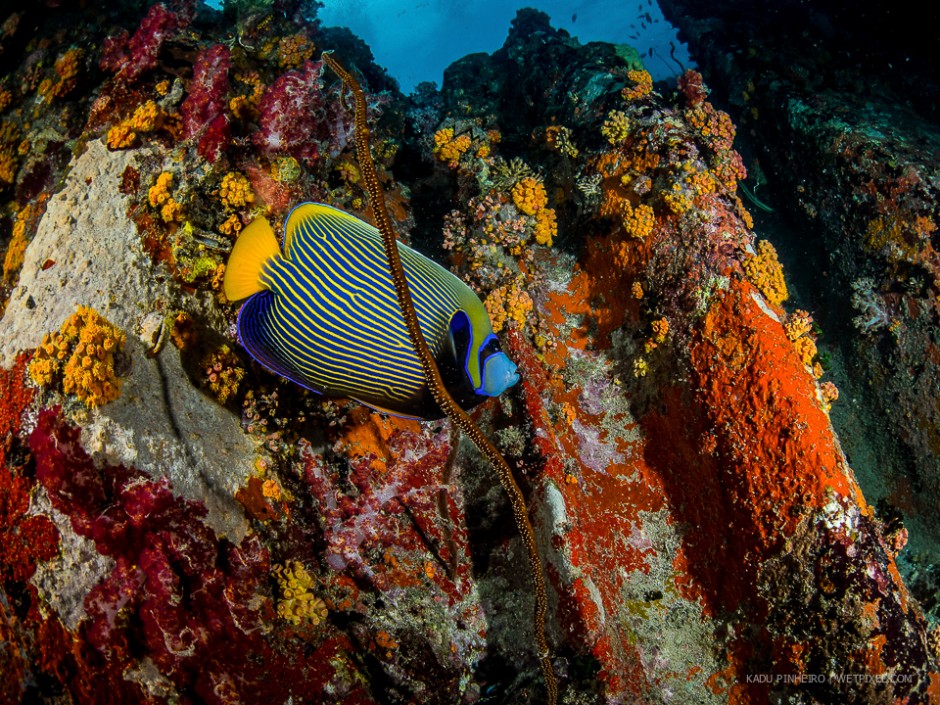
Imperial angelfish (Pomacanthus imperator) amidst soft corals.
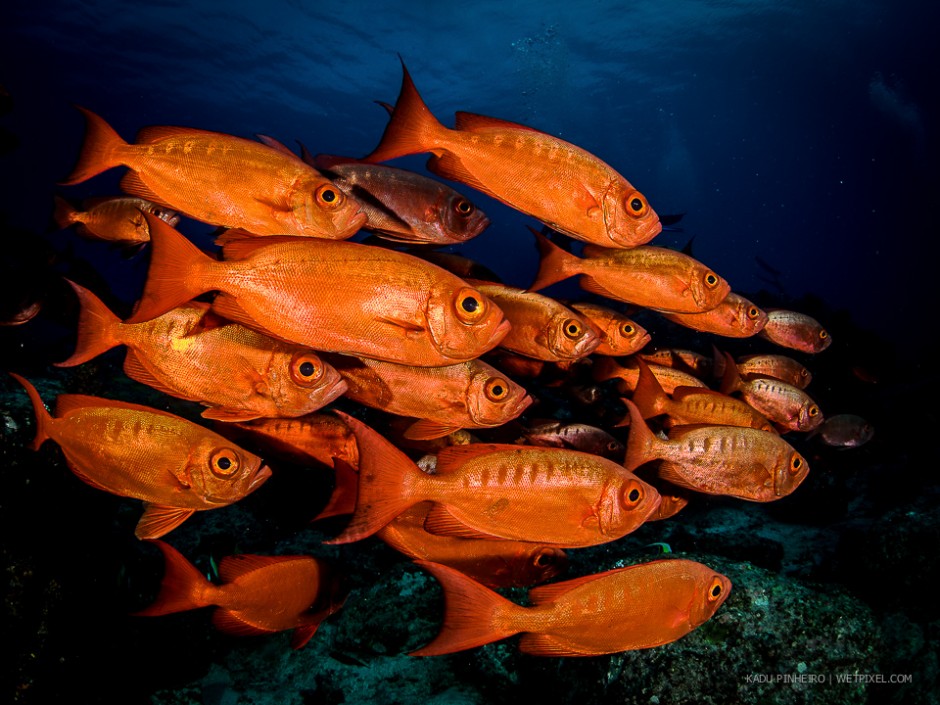
A group of crescent-tail bigeye (Priacanthus hamrur).
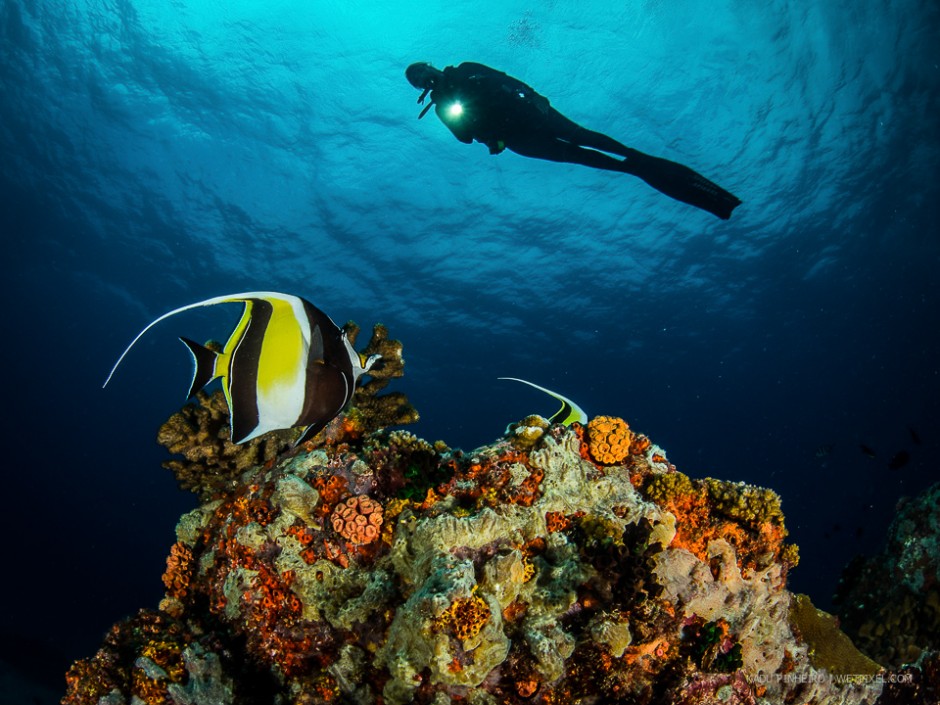
Signature fish of the Indian Ocean, the Moorish idol (Zanclus cornutus) are viewed by a diver.
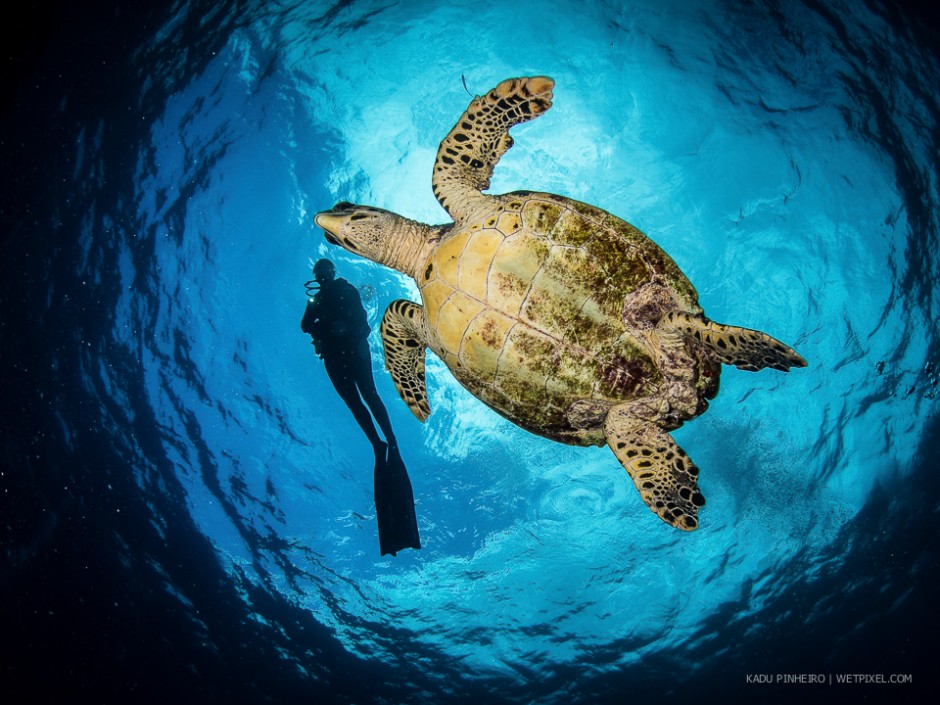
Hawksbill turtle (Eretmochelys imbricata) and diver in Snell's window.
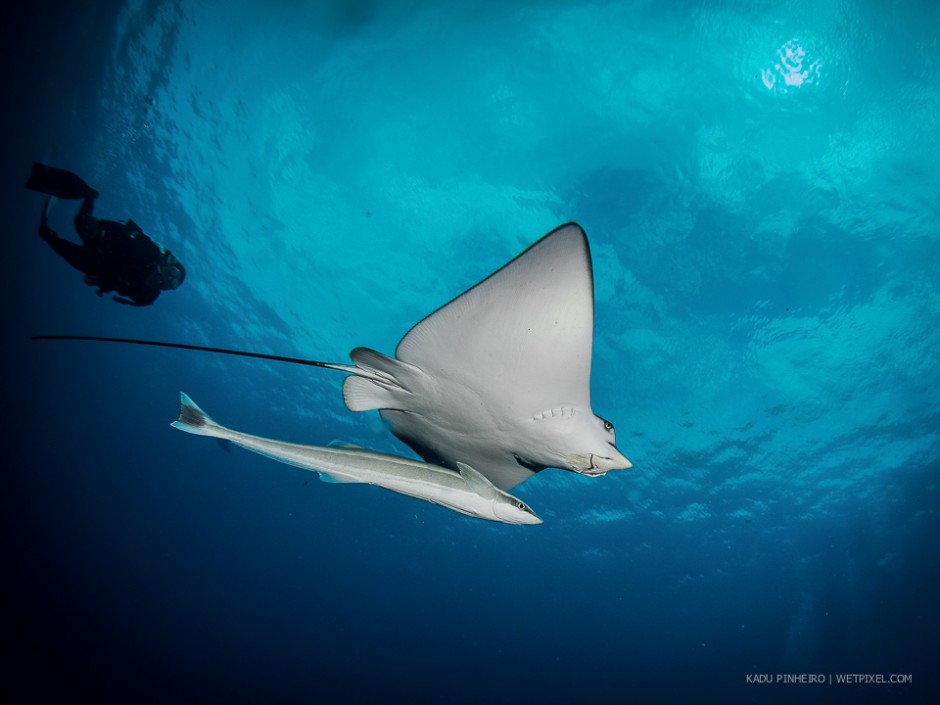
Spotted eagle ray (Aetobatus narinari) with its fellow traveling remora (Echeneis naucrates).
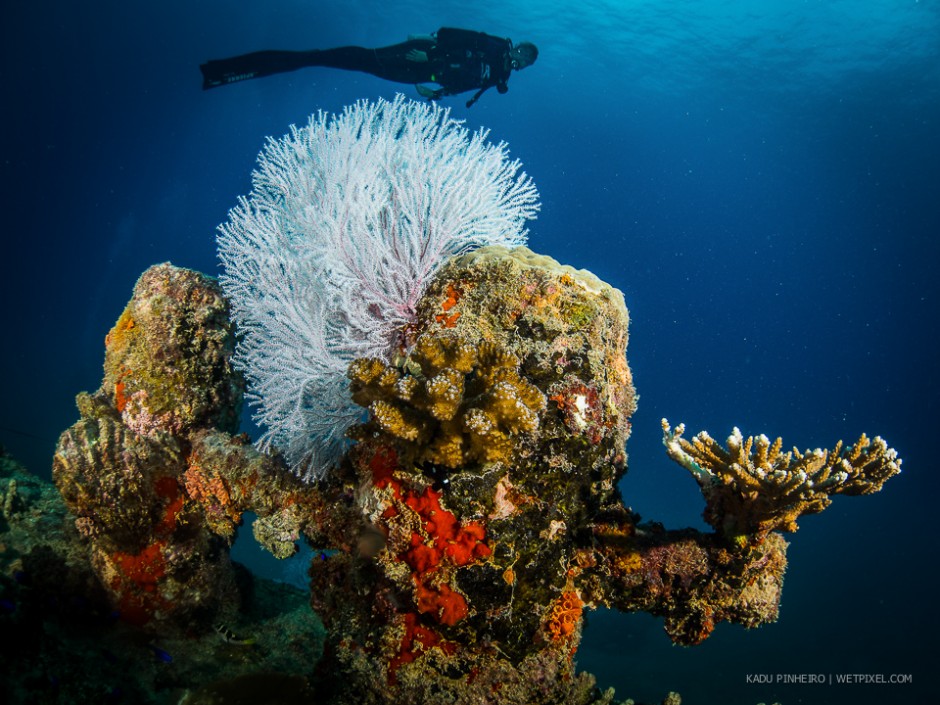
Diver models with coral encrusted wreck structure.

Model peers into the structure of a wreck.
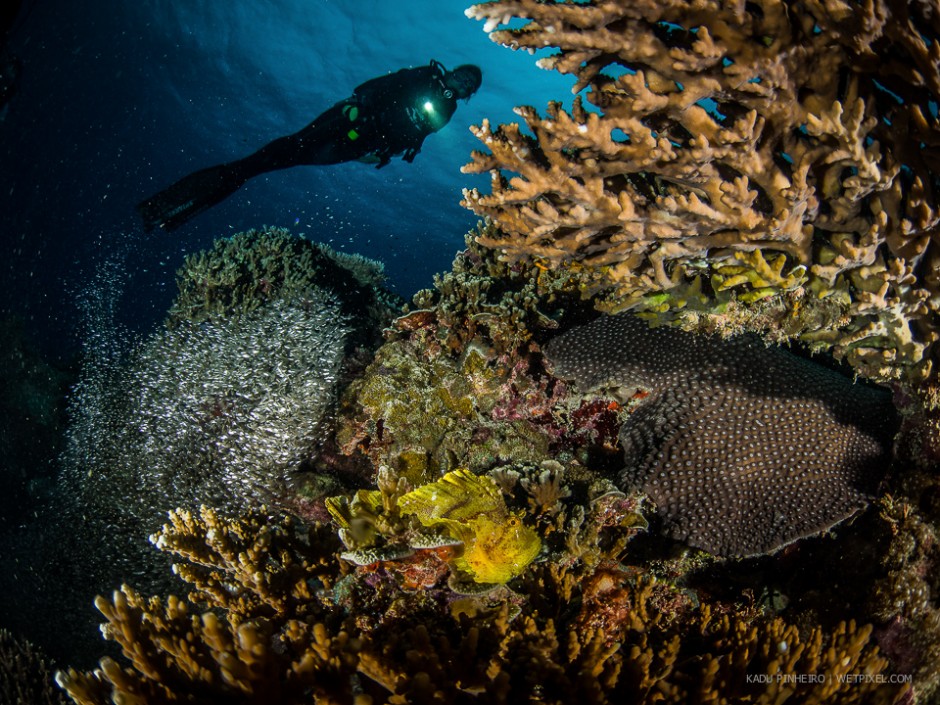
Leaf scorpionfish (Taenianotus triacanthus)
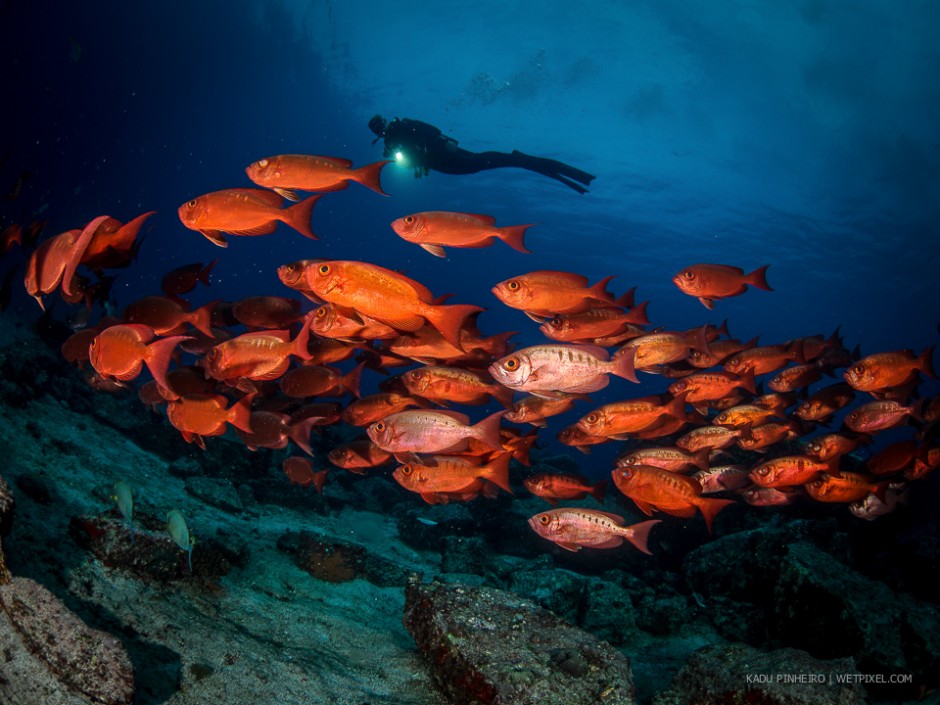
Dive model with a group of crescent-tail bigeye (Priacanthus hamrur).

Crescent-tail bigeye (*Priacanthus hamrur) can rapidly change colour, becoming partly or fully silver. They also sometime adopt a barred patterning.
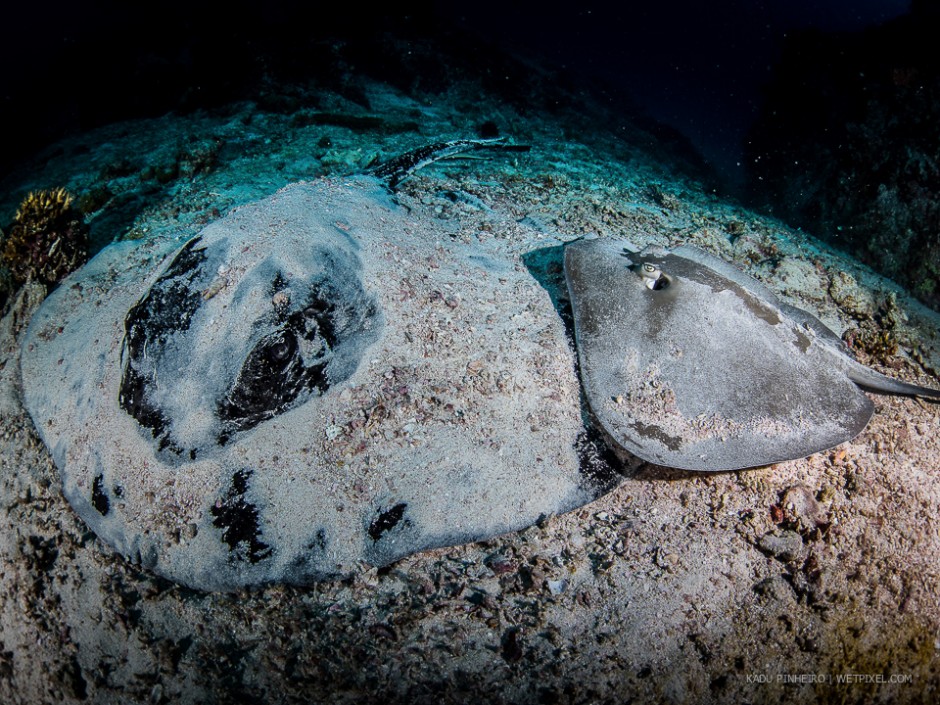
Black-spotted (Taeniura meyeni) and cow tailed (Pastinachus sephen) stingrays.
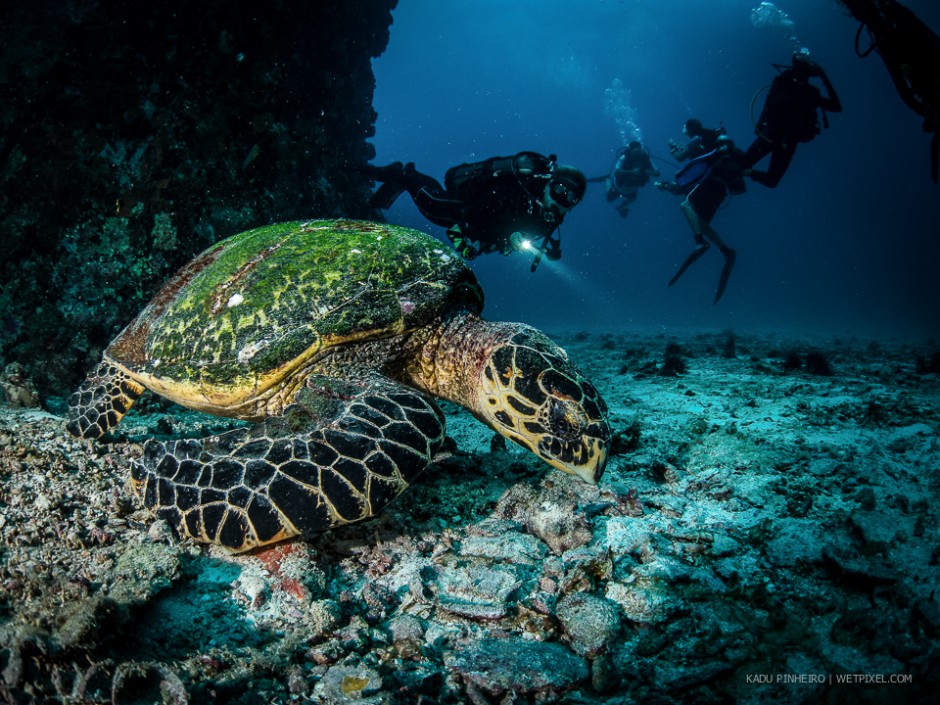
Hawksbill turtle (Eretmochelys imbricata) and divers.
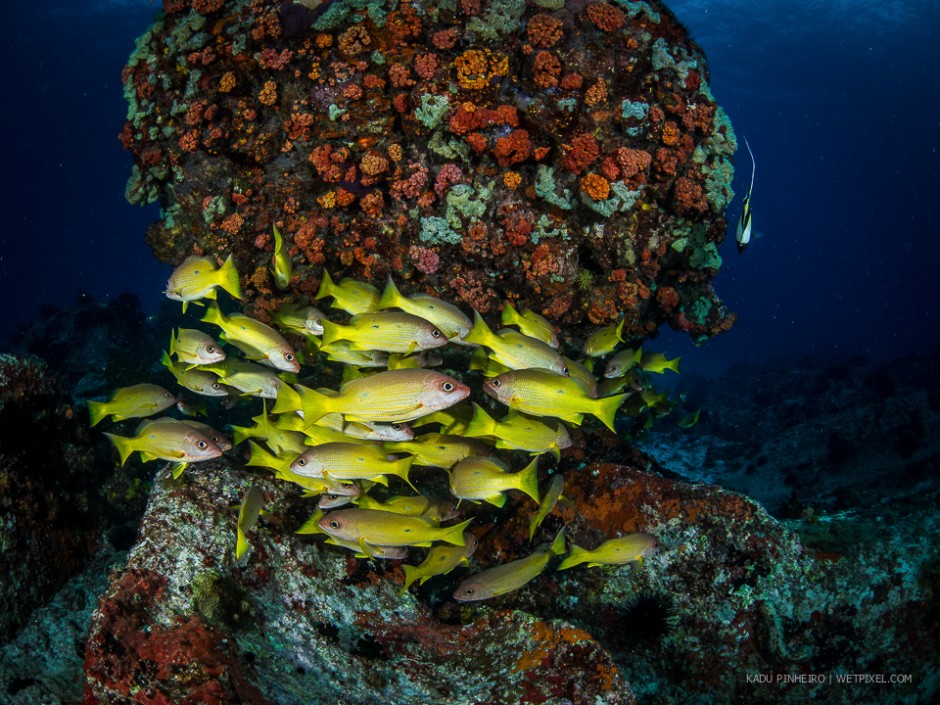
Lutjanus kasmira

Model with corals.

Hawksbill turtle (Eretmochelys imbricata) and diver.